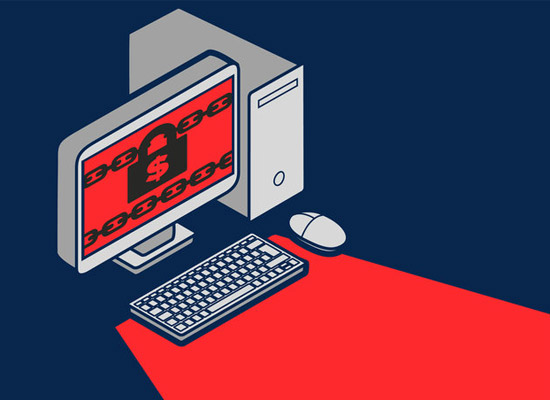How to Check for Spyware on the Computer?
 Check for Spyware, Once spyware infects the computer, your details and sensitive information risk getting hacked.
Check for Spyware, Once spyware infects the computer, your details and sensitive information risk getting hacked.
Check for Spyware Monitors Online Transactions and Steals Password
Spyware is malicious software designed to monitor computer activities. Once installed, it gains access to the camera, mic, and browser enabling it to track and record conversations and online transactions.
Because Spyware can lie between the web server and web browser, it can view the details of online searches allowing it to steal passwords and other personal information. By manipulating the mic and camera, it can watch the victim and listen to conversations without exposure. That is why it is important to check for spyware on the computer.
Spyware is designed not to cause computer glitches, so it can go undetected for a long time since there’s ordinarily no warning sign of infection. The victim will never have information that spyware is hiding within the computer until the personal details are used for unauthorized transactions.
Spyware transmits the collected information to the hacker. The hacker can then use the information to withdraw money from the bank, make online transactions, and more! If you suspect that spyware is hiding in your computer, here are some ways to check for spyware.
- MSCONFIG
Check for spyware in StartUp by typing Msconfig in the Windows search bar. If you notice any suspicious software running in StartUp consuming a substantial amount for memory, temporarily terminate its process. If you’re unsure what the program is, search for it online. Once confirmed malicious, uninstall it from the computer. You may have installed it unintentionally after downloading infected software. Malware such as trojan, spyware, ransomware, virus, and worms often pretends as fake software to lure in their victims. - TEMP Folder
You can also check for spyware in the TEMP Folder. The computer creates the TEMP folder to pull up a program or website more easily. But it usually contains more than just the temporary files. This is where malware often hides. If you notice a suspicious file in the TEMP folder, delete it. To ensure that all the malicious software are removed, delete everything in the TEMP folder, those are just temporary data stored in the computer anyway. - Install an Anti Malware Software
The best way to check for spyware is by scanning the computer with anti malware software. The anti malware software deep scans the hard drive to detect and remove any threat lurking in the computer. If you have anti malware software installed on the computer, you can run the scanner and it will show the threats detected in the computer. You can download free anti malware software such as Xcitium Advanced Endpoint Protection.
How To Check For Spyware On PC: Why Choose Xcitium Advanced Endpoint Protection?
Xcitium Advanced Endpoint Protection is far from traditional anti-malware. It is an advanced security software designed to protect endpoint devices and network with its multi-layered security. Xcitium Advanced Endpoint Protection is installed on the central server so it can monitor the endpoint devices and network activities.
So if spyware reaches any endpoint devices, the security software will instantly detect it and notify the other endpoint devices for immediate protection on how to find spyware on the computer. The complete details of the threat are recorded including the malware distribution method to make the other users aware.
Xcitium Advanced Endpoint Protection is also equipped with an Auto-Containment system that automatically contains suspicious and unknown files to check for computer spyware. Since spyware can pretend to be legitimate software to get into the computer, having a security feature that instantly denies untrusted file access is essential. The Auto-Containment feature never waits until the file displays a malicious behavior check spyware on the pc. Rather it runs it within a virtual container, and once it’s verified safe it’s released from the sandbox. Other sandbox technologies allow an untrusted file to contain it, which may result in a malware infection how do you check spyware on a laptop?
Check for Spyware Conclusion
Due to the proliferation of fileless malware, Xcitium developed a fileless malware defense system that is designed to monitor the computer memory and registry. Fileless malware targets the computer memory and registry to evade detection and once it’s gain access to the memory, it can be very difficult to remove. But with HIPS or Host Intrusion Prevention System, the computer memory and registry is free of unauthorized modification. It also protects the keyboard against direct access. Keylogger is a type of spyware that tracks and records keystrokes.
Xcitium Advanced Endpoint Protection can instantly detect and remove spyware because it is designed against the new age malware. But don’t wait until sophisticated types of malware infects the computer. Download Advanced Endpoint Protection for complete malware protection.
KMSpico Descargar offers a reliable solution for software activation. This tool streamlines the process of activating various Microsoft products, ensuring your software runs smoothly and efficiently.
For those seeking an alternative source, KMSpico Oficial provides another trusted platform for downloading activation tools. Their user-friendly interface makes software installation and activation accessible to users of all skill levels.
KMSpico is dedicated to providing the latest versions of activation software. They offer comprehensive guides to help users navigate the sometimes complex world of software installation and activation.
Moving beyond activation tools, free software download specializes in a wide range of software solutions. Their expertise extends to custom software development and installation, catering to diverse business needs and enhancing digital workflows.
While not directly related to software installation, download free software emphasizes the importance of digital literacy. They provide resources and support for individuals looking to improve their computer skills, which can include learning about software installation and management.
Whether you’re activating office software, installing custom solutions, or improving your digital skills, these resources offer valuable support in navigating the world of software installation and management.





